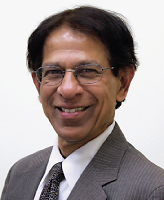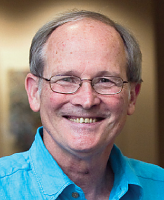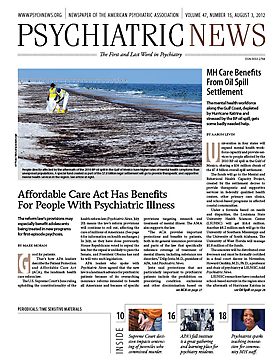Dilip Jeste, M.D.
The Assembly has been an important component of APA since its inception in 1952 as the Assembly of District Branches (DBs). A grass-roots movement at APA began in the first half of the 20th century when the number of members grew rapidly from 100 in 1920 to more than 3,300 in 1944. The Association was then centrally governed by a Council. It was felt that local DBs would help facilitate members’ involvement in the organization.
The first two DBs (Pennsylvania and Delaware, and Kansas and Missouri) were formed in 1949; by 1952, that number had increased to 16. These DBs sent their representatives to the first historic meeting of the Assembly in 1953. The meeting agenda included four topics that sound eerily familiar: the relationship between psychiatrists and clinical psychologists, the issue of nominating multiple members for APA office, local and state influence on legislation, and accreditation of mental hospitals.
“The idea behind the concept was simple—to widen the scope of active participation of the general members and to bring the Council into closer relationship with APA members,” said Joseph Abramson, M.D., the first speaker of the Assembly.
What started with just 16 representatives and a budget of $500 has since grown in prominence and attendance. Today, the Assembly has representatives from over 75 DBs. I encourage every APA member to become familiar with the Assembly and try to benefit from the array of opportunities provided by this structure. Meetings of the Assembly are held twice a year: in November in Washington, D.C., and in May just before the APA annual meeting. The Assembly is in a great position to represent APA’s diverse membership of different practice types, genders, subspecialties, and cultural backgrounds, including minorities and underrepresented groups.
APA recognizes that there is still a lot to do in terms of improving communication and enhancing involvement of members in the Assembly and DBs. To this end, I invited Scott Benson, M.D., the speaker of the Assembly, to use this column to discuss his priorities as well as important issues facing the Assembly in the coming year. Below are his thoughts.
Scott Benson, M.D.
Improving our communication with APA members is my top priority for the Assembly this year. And your input will be critical to two other issues facing APA at this time—
DSM-5 and Maintenance of Certification. How do you get answers or offer input? The Assembly’s original charge is to give voice to members through the DBs. The DBs still send representatives and deputy representatives so members can access the Assembly through someone from their state. Representation has expanded so that members have multiple channels of access. Early career psychiatrists (ECPs), members in training (MITs), minority/underrepresented groups (MURs), and allied psychiatric organizations also have seats in the Assembly. I encourage you to dialog with your Assembly reps and to include me in that discussion:
Assembly.speaker@gmail.com.The first big issue is DSM-5. The preliminary versions of DSM-5 proposals have been available for public comment.
The most recent public comments will be considered by the DSM-5 work groups. Then the draft versions of the diagnostic criteria will move to the next level of review, which includes the Assembly and the Board of Trustees. Roger Peele, M.D., has represented the Assembly on the DSM-5 Task Force. The Assembly Committee on DSM-5, chaired by Glenn Martin, M.D., has begun reviewing the draft versions of the criteria and the supporting text. This round of review will focus particularly on clinical utility, which has been the highest priority guiding the DSM-5 development process. Any changes from DSM-IV to DSM-5 should have a positive impact on clinical practice. The Assembly Committee on DSM-5 will be interacting with the DSM-5 Task Force, the full Assembly, and the Board of Trustees. While our work will be thorough, our deliberations must adhere to a strict timeline. DSM-5 is scheduled to be published in time for the May 2013 annual meeting in San Francisco.
The other important issue: Maintenance of Certification (MOC). APA members have voiced serious concerns about MOC. Suddenly, it seemed, we had a new process that was more complicated, more expensive, and more intrusive. The need for these changes was poorly communicated, if the messenger could even be found. The shift from a once-in-a-career exam to 10-year recertification to a continuous professional learning model was threatening. At the Assembly meetings we had regular updates from the Assembly/Board Work Group on MOC and Maintenance of Licensure (MOL). We sent a message through APA leadership to the American Board of Psychiatry and Neurology. While there has been no change in the requirements from the American Board of Medical Specialties, there is reason to think that there may be some broadening of the requirements in consideration of the unique aspects of psychiatric practice. Bob Batterson, M.D., is chair of the Assembly Committee on MOC. Eric Plakun, M.D., is working with that committee to gather vignettes from unique practice settings that would allow psychiatrists to protect their relationships with patients and meet the Performance in Practice (PIP) requirements. The Assembly supported the Board’s search for other tools that will help our members who are participating in MOC. The PIP modules that support a structured review of your treatment are available as a member benefit
(www.apaeducation.org/ihtml/application/student/interface.apa/index.htm). And the Assembly is prepared to ask for more.
Our work on these and other issues is continuing. Your Assembly representatives will be meeting regionally with their Area Councils over the summer and fall. You can expect them at your DB meetings. Or maybe you can contact them online. You can find Assembly members on the APA Member-to-Member list serve. Others have joined the APA group on LinkedIn. I look forward to hearing from you!



